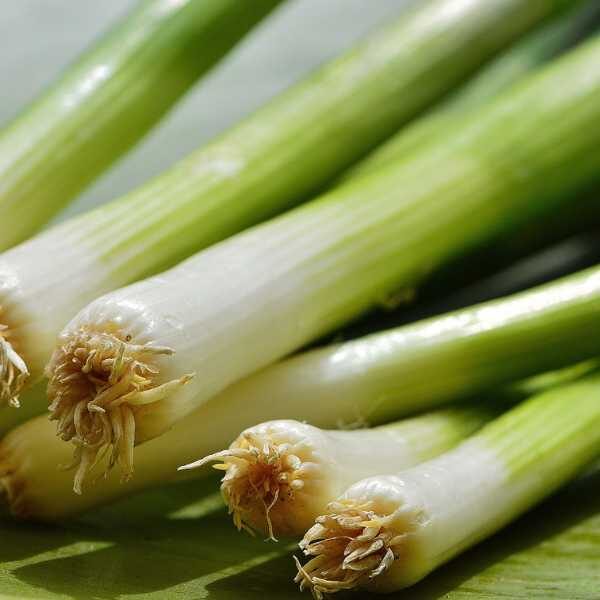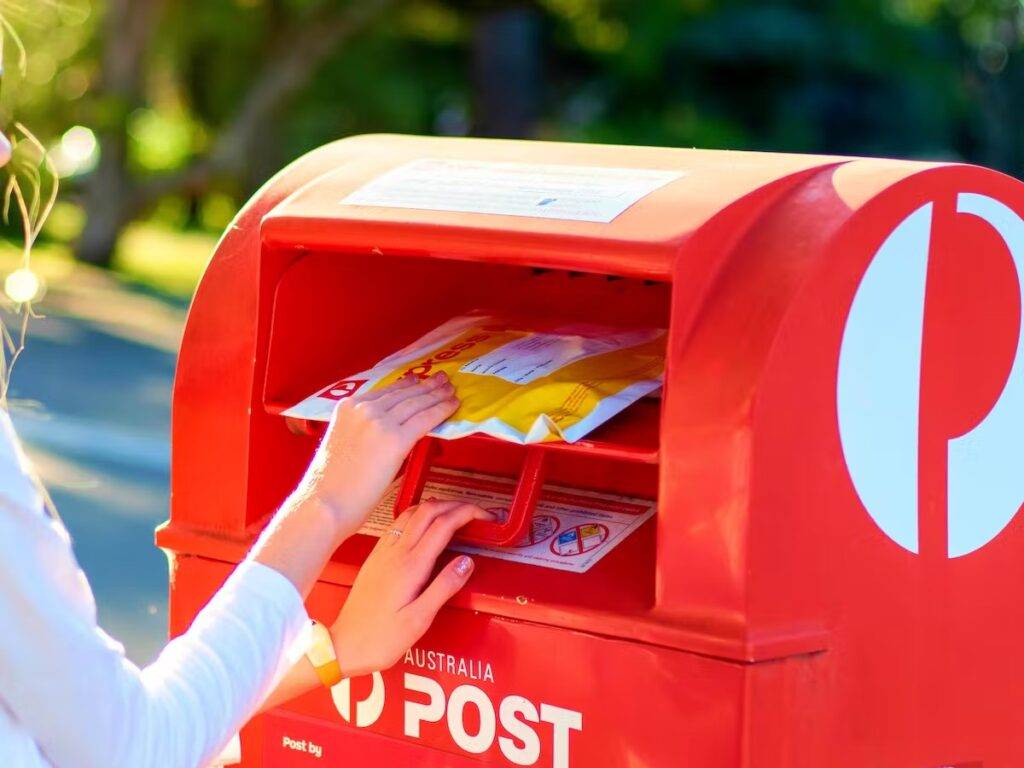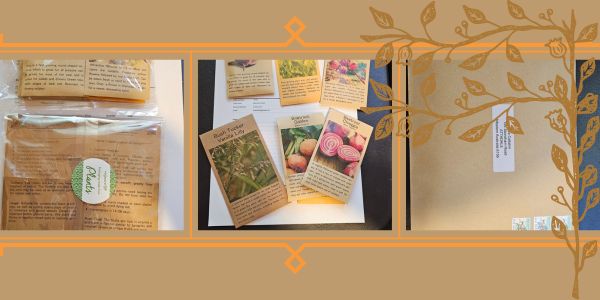Spring Onion White Lisbon
$4.95
Allium Cepa
- Seed count 100
- Mild Sweet Flavour
- Hardy Biennial
Out of stock
Email when stock available
Description
Spring Onion White Lisbon is the ideal salad onion producing strong juicy bright-green tops with a long clear-white shank and a mild sweet flavour.
Spring Onions are very economical as most of the plant can be eaten with very little waste. Quick to mature, they are long-lasting and can be left to make larger stems without losing their flavour. Forms small bulbs when mature. Will do best on well-dug, manured soil in a sunny position.
| Method: Raise seedlings | Soil Temp: 8°C - 30°C |
| Cool Mountain: May - Jul | Position: Full sun |
| Arid: May - Aug | Row Spacing: 10cm apart |
| Temperate: April - Aug | Planting Depth: 5mm |
| Sub Tropical: Apr - Jun | Harvest: 120 days |
| Tropical: Jun - Jul | Plant Height: 25cm |
🌱 Sowing: In Trays vs. Direct in the Garden
In Trays (Recommended for most regions)
Starting onions in trays gives you a head start and allows for better control over spacing later on.
Best time to sow:
- Temperate & Cool zones: May–August
- Subtropical zones: April–June
- Arid zones: April–July
How to sow:
- Use a quality seed-raising mix.
- Sow seeds 2mm deep.
- Keep trays in a sunny, sheltered spot or greenhouse.
- Thin seedlings once they’re a few centimetres tall, or leave a few to snip as microgreens.
🌼 Tip: Onions are slow starters. Be patient—it may take 10–14 days for germination.
Direct Sowing
Direct sowing is possible in mild climates with well-prepared, weed-free soil.
- Sow shallowly, 0.5–1 cm deep.
- Thin seedlings to 10–15 cm apart as they grow.
- Keep beds moist during germination.
🌿 My advice? Go with trays first if you’re dealing with clay soil, slugs, or heavy rain. You’ll get stronger seedlings and better spacing at transplant time.
🧱 Soil and Position
Soil Type:
- Onions prefer free-draining, fertile soil with a neutral pH (6.0–7.0).
- Add well-rotted compost or aged manure a few weeks before planting.
Position:
- Full sun is essential for strong bulb development.
- Avoid beds that have recently grown garlic, shallots, or leeks (allium rotation is important to reduce disease risk).
🌼 Gardener’s note: Raised beds or mounded rows are great for drainage, especially in winter-wet areas.
🌿 Care and Maintenance
- Watering: Regular and consistent—don’t let them dry out or become waterlogged. Reduce watering as bulbs mature.
- Weeding: Keep the bed clean. Onions don’t like competition.
- Feeding: Light feeders—apply a liquid seaweed or fish emulsion every 2–3 weeks early on. Too much nitrogen late in the season can delay bulb formation.
🌱 Tip: Mulching with straw or sugarcane mulch keeps weeds down and moisture even.
🌼 Companion Planting Guide
| Good Companions | Why It Works |
|---|---|
| Carrots | Mutual pest protection (onions deter carrot fly) |
| Beets | Similar soil needs and growth habits |
| Lettuce | Shallow-rooted, fills space between rows |
| Chamomile | Improves onion flavour |
| Strawberries | Onions deter pests like aphids |
🚫 Avoid planting near: Peas, beans, or other legumes—onions can stunt their growth.
🌾 Harvesting
Green Onions / Spring Onions
- Harvest when leaves are 15–20 cm tall and stalks pencil-thick.
- Usually ready 8–10 weeks from sowing.
Pickling Onion
- Timing: Around 10–12 weeks after sowing, depending on variety and conditions.
- Look for bulbs that are starting to swell but are still small and firm.
- Leaves will still be upright and green (they don’t need to flop like storage onions).
Bulbing Onions
- Ready in 20–26 weeks depending on variety and growing conditions.
- Wait until the tops yellow and fall over naturally. Stop watering at this stage.
- Allow bulbs to “cure” in a dry, airy spot for 2–3 weeks before storing.
🌿 Harvest tip: Gently lift with a fork—don’t yank, or you risk bruising them.
🐛 Common Issues & Fixes
| Problem | Symptom | Fix |
|---|---|---|
| Poor bulb development | Lots of leaves, no bulb | Too much nitrogen or overcrowding—thin seedlings & avoid overfeeding late |
| Downy mildew | Pale patches, stunted growth, fuzzy spores on leaves | Improve airflow, avoid overhead watering, use organic fungicide |
| Onion thrips | Silvery streaks, curling leaves | Neem oil spray, encourage lacewings and ladybirds |
| Bolting (flowering early) | Tall central stalk with flower | Sow at the right time, protect from cold snaps |
| Rot or fungal disease | Yellowing, mushy base, or collapsed stems | Ensure well-drained soil, rotate crops, don’t overwater |
🌼 Seed Saving Guide
Saving onion seed takes patience, but it’s very doable if you let your plants go full cycle.
1. Biennial nature:
- Onions need two seasons to set seed. In the first year, they grow bulbs; in the second, they flower.
2. Selecting parent plants:
- Choose the healthiest, most typical bulbs (good shape, no disease, strong storage quality).
- Allow them to cure and store over summer.
3. Replanting:
- In autumn or early winter, replant the bulbs in prepared soil.
- The plant will flower in spring, forming beautiful umbel heads full of seeds.
4. Pollination:
- Onions are insect-pollinated and can cross with other onion varieties.
- To maintain a pure variety, only grow one type for seed or space them 1 km apart.
5. Harvesting seed:
- Wait until the flower heads turn brown and dry.
- Snip off the heads into a paper bag and dry further indoors.
- Rub heads to release seeds, winnow out chaff, and store in a cool, dry place.
🌿 Lifespan of onion seed: About 1–2 years with good viability if stored well.
🌻 Final Thoughts
Growing onions from seed might take a bit of patience, but it’s well worth the effort. Starting them off right—especially in trays—sets you up for a strong, healthy crop that stores well into the warmer months. They’re not heavy feeders, but they do need consistency and care, especially when young. And while they’re not the flashiest crop, they quietly anchor the garden and the kitchen alike.
So go on—pop a few trays in this season, keep an eye on spacing and weeds, and let your onions quietly do their thing. Before you know it, you’ll have a harvest that smells sweet and earthy, ready to lift and cure with pride. 🧅💚
Growing Spring Onions
Site Selection and Soil Preparation
Sunlight:
- Spring onions prefer at least 6 hours of sunlight daily, especially during cooler months.
- In extremely hot regions, some afternoon shade might be beneficial, particularly during the peak summer heat.
Soil:
- Well-drained, fertile soil is essential. Amend heavy clay soils with copious amounts of compost or other organic matter to improve drainage and aeration.
- Sandy soils may require more frequent watering to maintain moisture.
- A slightly acidic to neutral pH (6.0-7.0) is ideal.
Soil Preparation:
- Before planting, till the soil to a depth of approximately 20cm, removing any weeds or rocks.
- Incorporate well-rotted compost or other organic matter to enrich the soil and improve its structure.
Planting Method
Sowing Time:
- Sow seeds directly into the garden bed in autumn for a winter and spring harvest or spring for a summer and autumn harvest.
- Adjust timing based on your local climate. See product description.
Sowing Depth & Spacing:
- Sow seeds directly into your garden about 3 mm deep and 3 cm apart.
- Thin seedlings to 5 cm apart once they have a few true leaves to prevent overcrowding and promote better growth.
Ongoing Care
Watering:
- Consistent moisture is crucial, particularly during germination and establishment.
- Water deeply and less frequently to encourage deep root growth and avoid surface waterlogging.
- Mulching helps retain soil moisture and suppress weeds.
Fertilising:
- Spring onions are relatively low-maintenance, but a light application of balanced, slow-release fertiliser at planting or during active growth can boost production.
- Avoid excessive nitrogen, as this can promote excessive leafy growth at the expense of bulb development.
Weed Control:
- Regularly weed around your spring onions to prevent competition for nutrients and water.
- Mulching helps suppress weed growth.
Pest & Disease Management:
- Monitor plants for pests like onion flies and aphids.
- Natural pest control methods, such as introducing beneficial insects (ladybugs) or using insecticidal soap, are recommended over harsh chemicals.
Harvesting
Leaf Harvesting:
- Begin harvesting leaves when they reach a desirable length, typically 6-8 weeks after sowing (depending on the variety).
- Cut the leaves from the base, leaving the roots intact for continued growth. This allows for multiple harvests from a single plant.
Bulb Harvesting:
- For a full bulb harvest, pull the entire plant from the ground when the bulbs reach a desirable size.
Companion Planting
Beneficial Companions:
- Carrots: Deters onion flies and benefits from the onion’s pest-repelling properties.
- Lettuce/Spinach: Tolerates partial shade from spring onions and shares resources.
- Rosemary: Repels many common garden pests.
- Chamomile: Can help improve the soil.
Plants to Avoid:
- Beans can sometimes inhibit onion growth.
Regional Considerations
Tropical/Subtropical Regions:
- Plant in the cooler months (autumn and winter) to avoid heat stress. Provide adequate shade during the hottest part of the day.
Temperate Regions:
- More flexibility in planting times. Autumn and spring sowings are ideal.
Arid Regions:
- Water conservation techniques are crucial. Mulching and drip irrigation are recommended.
Troubleshooting:
Yellowing Leaves:
- May indicate nutrient deficiencies (particularly nitrogen), overwatering, or pest infestation.
Poor Growth:
- Check for pests, diseases, soil compaction, or nutrient deficiencies.
Bolting (Flowering):
- Occurs under stress conditions (heat, drought, overcrowding).
- Harvest immediately.
Postage Charge
Orders under $30 attract a $4.95 shipping charge. Orders $30 and above have free shipping.
Order Times
Seed orders are normally dispatched within three business days. You will receive an email when seeds are mailed out.
Postage Days
Seeds are mailed out Monday to Friday at 1pm. Except for the Friday of long weekends.
Postage Times
WA 2-3 Days: SA,NT 3-5 Days: NSW, ACT, QLD, VIC: 5-7 Days
Carrier
We use Australia Post Letter Postage for the majority of orders
Not only are our seeds packed in recycled paper envelopes, we keep the theme going when we post out website orders. To protect your seeds from moisture and the letter box munchers (snails), we use a very special plastic free material made from plants. They are then put into recycled mailing envelopes. Green all the way 💚🌿




Reviews
There are no reviews yet